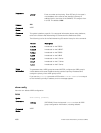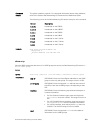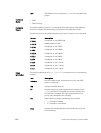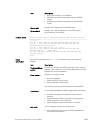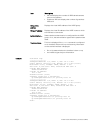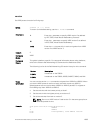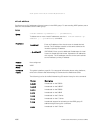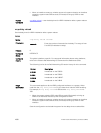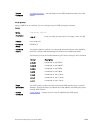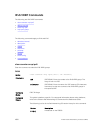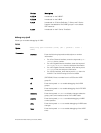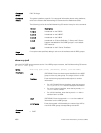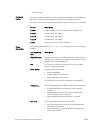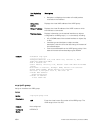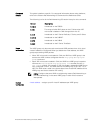
Command
History
This guide is platform-specific. For command information about other platforms,
refer to the relevant Dell Networking OS Command Line Reference Guide.
The following is a list of the Dell Networking OS version history for this command.
Version Description
9.2.(1.0) Introduced on the Z9500.
8.4.2.1 The range of valid VRID values on the E-Series when VRF
microcode is loaded in CAM changed from 1 to 15.
8.4.1.0 Introduced on the E-Series ExaScale, C-Series, and S-Series.
8.3.19.0 Introduced on the S4820T.
8.3.7.0 Introduced on the S4810.
8.3.2.0 Introduced on the E-Series TeraScale.
Usage
Information
The VRRP group only becomes active and sends VRRP packets when a link-local
virtual IP address is configured. When you delete the virtual address, the VRRP
group stops sending VRRP packets.
• When VRF microcode is not loaded in CAM, the VRID for a VRRP group is the
same as the VRID number configured with the vrrp-group or vrrp-ipv6-
group
command.
• When VRF microcode is loaded in CAM, the VRID for a VRRP group is equal to
16 times the vrrp-group or vrrp-ipv6-group vrid number plus the ip
vrf vrf-id number. For example, if VRF microcode is loaded and VRRP group
10 is configured in VRF 2, the VRID used for the VRRP group is (16 x 10) + 2, or
162. This VRID value is used in the lowest byte of the virtual MAC address of the
VRRP group and is also used for VRF routing.
NOTE: Configure the same VRID on neighboring routers (Dell Networking or
non-Dell Networking) in the same VRRP group in order for all routers to
interoperate.
Related
Commands
virtual-address — assigns up to 12 virtual IP addresses per VRRP group.
Virtual Router Redundancy Protocol (VRRP)
1905



